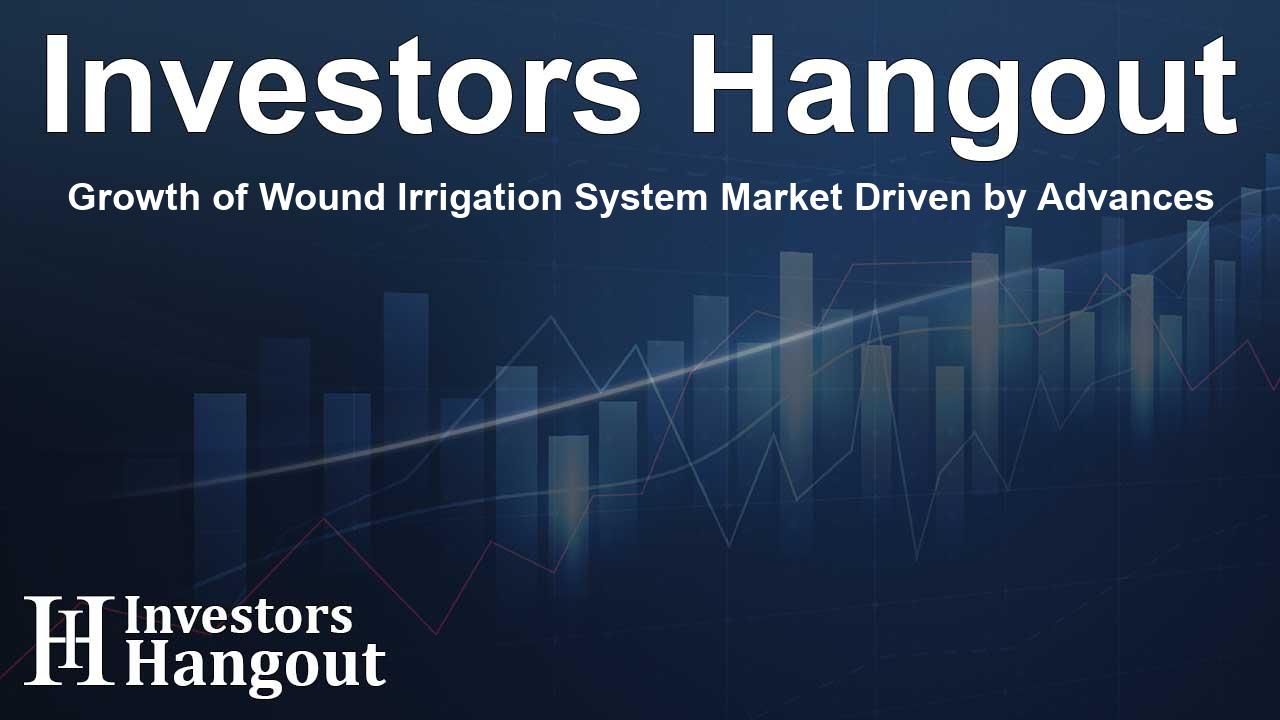Growth of Wound Irrigation System Market Driven by Advances

Exploring the Growth of Wound Irrigation Systems
Wound irrigation systems utilize bioactive compounds from medicinal plants, playing a crucial role in addressing a wide range of applications across pharmaceuticals, cosmetics, and healthcare. These botanical extracts provide therapeutic and nutritional advantages, catering to an increasing preference for natural alternatives. As consumers seek out plant-based solutions and preventive health care, the global adoption of wound irrigation systems has surged. Their contributions range from dietary enhancements that bolster immunity to active botanical ingredients featured in skincare and food products. Factors such as increased awareness of herbal medicines, advancements in extraction technologies, and the rise of e-commerce are pivotal in propelling this market growth.
Market Overview and Dynamics
The wound irrigation systems market is positioned for substantial growth, driven by the rising prevalence of chronic wounds, such as diabetic ulcers and surgical site infections. With high healthcare tariffs and continuous advancements in automated irrigation devices, there is a marked increase in the acceptance of these systems. As healthcare providers focus on reducing infection rates and ensuring efficient healing processes, these innovations are becoming essential in modern wound care.
Furthermore, the growing elderly demographic and the heightened incidence of diabetes and obesity create substantial demand for effective wound care solutions. Wound irrigation systems have emerged as a critical component, delivering standardized care for infection control and enhancing patient recovery. This upward trend reflects a broader shift towards comprehensive wound management in healthcare settings.
Introducing the Market Segmentation
The wound irrigation systems market is segmented into several categories. Primarily, it is categorized based on product types, including manual and battery-operated options. Applications of these systems can be found in treating chronic wounds and surgical wounds, among other areas. The end-user category encompasses hospitals, ambulatory surgical centers, and other healthcare facilities.
Geographically, the market encompasses regions like North America, Europe, Asia-Pacific, and LAMEA. Each region presents unique market dynamics, shaped by local healthcare needs and advancements.
Market Growth Drivers and Challenges
As the incidence of chronic wounds rises, the demand for wound irrigation systems spirals correspondingly. This demand is driven by the increasing rates of diabetes, obesity, and aging populations, resulting in a greater need for efficient wound care methods. For example, these systems offer a reliable and effective approach to cleanse wounds, thus significantly reducing infection risks and promoting healing.
Moreover, technological advancements contribute significantly to the sector’s expansion. Modern devices, often portable and equipped with features such as pressure control and antimicrobial integration, enhance clinical outcomes and foster wider adoption in various healthcare settings. The ongoing focus on preventing infections further escalates the demand for these solutions.
Addressing Industry Challenges
However, the wound irrigation systems market does face various challenges. High costs associated with advanced technologies may restrict access in lower-income regions. To counteract this issue, manufacturers are producing cost-efficient models and collaborating with healthcare providers to enhance affordability and access to these crucial devices.
The lack of trained professionals in wound care management, particularly in rural areas, poses another significant restraint. To mitigate this concern, stakeholders are facilitating training programs and educational workshops that focus on developing wound care competencies.
Regional Insights and Market Outlook
North America remains a dominant force in the global wound irrigation systems market, largely fueled by a high incidence of chronic wound cases and robust healthcare infrastructure. The U.S. leads this region with extensive healthcare coverage and advancements in wound care technologies.
Europe follows closely, experiencing growth driven by an aging population and increasing healthcare expenses. The UK, Germany, and France stand out with their strong healthcare networks and commitment to adopting advanced wound care practices. Meanwhile, Asia-Pacific is set to witness the most rapid growth, attributed to expanding healthcare access and rising patient awareness regarding wound management.
LAMEA regions are also emerging, with growing investments in wound care and increasing knowledge about infection control. Countries such as Brazil are particularly noteworthy as they seek to enhance healthcare accessibility and adopt advanced solutions for wound management.
Key Players in the Market
Several notable companies operate within the wound irrigation systems market, driving innovation and competitive growth. Major players include Bionix LLC, Zimmer Biomet Holding, Inc, Stryker Corporation, and Medline Industries.
Frequently Asked Questions
What are wound irrigation systems?
Wound irrigation systems are medical devices designed to deliver controlled saline solutions to cleanse wounds, minimize infection risks, and promote healing.
What factors drive the growth of the wound irrigation systems market?
The increasing prevalence of chronic wounds, advancements in technology, and a focus on infection prevention significantly contribute to market growth.
How do wound irrigation systems differ from traditional methods?
Unlike manual methods, wound irrigation systems offer consistent pressure and volume, enhancing patient safety and clinical efficiency.
What regions are showing the most potential for growth in this market?
Asia-Pacific is anticipated to exhibit the highest growth, driven by improved healthcare infrastructure and increasing patient populations.
What are some challenges faced by the wound irrigation systems market?
High device costs, a shortage of trained professionals, and regulatory hurdles pose significant challenges to market accessibility and growth.
About The Author
Contact Evelyn Baker privately here. Or send an email with ATTN: Evelyn Baker as the subject to contact@investorshangout.com.
About Investors Hangout
Investors Hangout is a leading online stock forum for financial discussion and learning, offering a wide range of free tools and resources. It draws in traders of all levels, who exchange market knowledge, investigate trading tactics, and keep an eye on industry developments in real time. Featuring financial articles, stock message boards, quotes, charts, company profiles, and live news updates. Through cooperative learning and a wealth of informational resources, it helps users from novices creating their first portfolios to experts honing their techniques. Join Investors Hangout today: https://investorshangout.com/
The content of this article is based on factual, publicly available information and does not represent legal, financial, or investment advice. Investors Hangout does not offer financial advice, and the author is not a licensed financial advisor. Consult a qualified advisor before making any financial or investment decisions based on this article. This article should not be considered advice to purchase, sell, or hold any securities or other investments. If any of the material provided here is inaccurate, please contact us for corrections.
